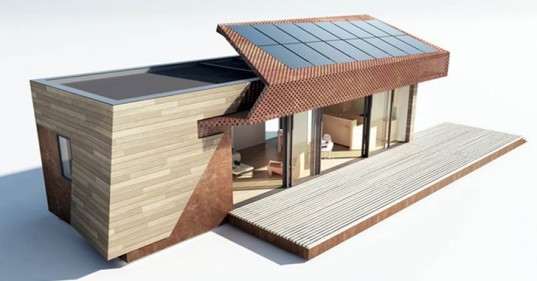For green buildings, the codes beat LEED


LEED is losing, and we all know why.
The U.S. Green Building Council's building rating system remains a common benchmark for the building industry, and it has decent brand recognition. But it's largely by default. The certifications are losing cachet among just about every constituency it needs to endure.
Building codes, believe it or not, are more nimble and effective.
Infighting and industry attacks have delayed LEED's 2012 version, long planned for debut at the Greenbuild expo in San Francisco last week.
Fear of a green planet
Architects mainly cling to LEED out of fear. Every year, fewer building owners and construction companies indicate they'll use LEED: 61% in 2008, 53% in 2010, and a minority 48% this year, according to a survey by Turner Construction released last week.
The big breaks for LEED have been through the 200-plus government agencies and municipalities adopting the standard. But they like LEED for odd reasons.
Example: A study announced Monday by the Harvard Business School concludes that "the possibility that government agencies might use purchasing to stimulate market demand for 'green' products and services is often overlooked."
So towns should use LEED to help move the market? That's what building codes do, and they do it much better. Why ask a private, unregulated bureaucracy like USGBC -- a "shadow government," as Michael Liu, AIA, wrote in ArchitectureBoston last year -- to take on this role?
Maybe 'cause it's super-duper easy?
Yes, says some officials. One South Dakota Bureau of Administration spokesman admits this month that LEED is "much better than a mandatory building code because you get a little wiggle room in these projects. The state recognizes that we can't pick a standard and then pursue it at any and all cost." (My italics.)
Really? Then why have a building code at all, South Dakota?
These are weak arguments for advancing LEED. But popularity isn't everything.
If it's broken...
LEED doesn't work very well, either. Last week, Thomas Frank blasted LEED in USA Today with a valuable analysis. He noted LEED's cheap points, including self-serving credits that earn money for the USGBC, as well as the huge tax breaks and incentives given out to fat-cat developers. He cites a 2008 study of 121 LEED-rated buildings, which on average use 24% less energy than conventional, non-LEED counterparts. Worse yet, a third of the buildings use more energy.
That's madness. Next year's new LEED, under development, will attempt to address that.
But it's too late.
Frank should have noted that today's building codes are already designed to shave 30% off of the energy bill vs. typical buildings, says GreenSource magazine. Longstanding codes like the International Energy Conservation Code (IECC), which is adopted in all places that use the newest building codes, are already doing the work that LEED intended to do.
Build to code, people, and you are already greener than LEED.
Codes beat LEED!
And some new codes are arguably far better than LEED, which doesn't have the open, consensus process that have guided codes for decades. LEED ends up with useless, feel-good credits, some reflecting its own interests or intense lobbying by decidedly ungreen industries.
Another good example is CalGreen, the California state green code, which "covers nearly as broad a field as LEED in the form of a mandatory state code," says Marilyn Sticklor, with the law firm Goulston & Storrs. And don't forget the International Green Construction Code (IGCC) and ASHRAE Standard 189.1, two consensus-based codes introduced in recent years, Sticklor adds. (Arecent Urban Land article also makes the case.)
Sticklor asks the big question: "Will new green building codes supplant LEED ratings?"
I say they already have.
The codes are already better, and jurisdictions are adopting them quickly and proudly. Like fuel-efficiency standards in the auto industry, the newest codes will help keep buildings healthy and safe, helping bring energy security to the United States while protecting our waterways and air.
The latest winner is Pima County, recognized with the first annual "Excellence in Energy Code Compliance Award" for adopting the IECC in 2001 and promoting energy-efficient building techniques. They will adopt the new, stricter 2012 IECC next year.
Meet me at ICC
"Simply enforcing the energy codes which have already been adopted will lead to higher quality construction, saving homeowners and business millions of dollars in energy costs each year," said Jayson Antonoff, U.S. director of Global Buildings Performance Network, which gave the award with theInstitute for Market Transformation.
The balance of power has shifted.
Next year, I may skip Greenbuild and go to the International Code Council's annual meeting in Atlantic City. Show some support for storm victims, too.
This year it was held in Portland, Ore., in late October. It's a nice, green city full of people serious about building -- and building green.
This post was originally published on Smartplanet.com